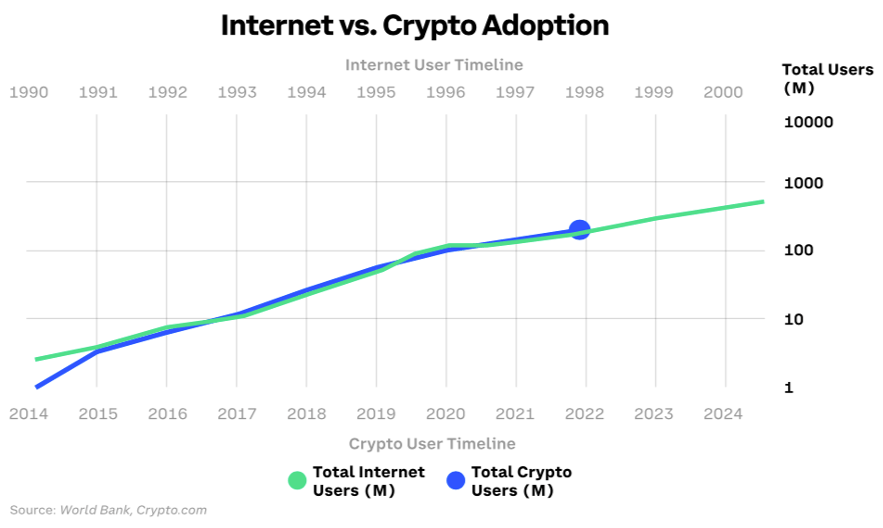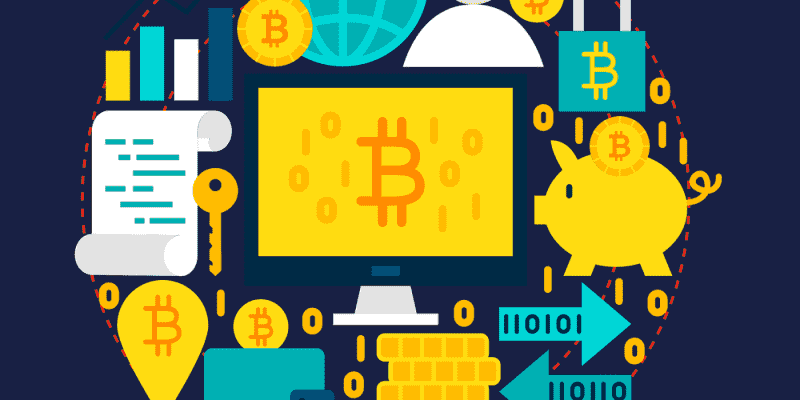The blockchain trilemma
Vitalik Buterin, the founder of Ethereum, identified the three main functions which, according to him, should constitute the blockchains of tomorrow in order to offer optimal conditions of use:
1. Scalability: blockchain infrastructures, such as Bitcoin or Ethereum for example, must be able to support an exponential number of transactions without weakening and without increasing transaction fees and delays. That is to say that the speed of execution of transactions and the costs associated with it must evolve in a balanced way, whether there are 400 users or 4 million users.
2. Security: Blockchain networks must be secure and resistant to computer attacks from hackers in order to prevent them from taking control of the network or modifying transactions. We need to be able to send monetary value or a message to another person via blockchain securely.
3. Decentralization: Rather than concentrating all operations on a centralized entity, such as a bank for example, blockchains distribute control of the network equally to all participants via the consensus algorithm. Proof-of-Work Bitcoin and Ethereum for example. But some blockchains centralize the validation of transactions between too few operators. In this context, the potential corruption of these actors comes back to the fore and therefore the continuity of operations on the network may be threatened.
For example, Bitcoin offers flawless decentralization and security, but falters on the scalability side. Its network allows up to 5 transactions per second. If millions of transactions occur, fees can skyrocket and validation times could take several minutes/hours. Even though Ethereum can support up to 15 transactions per second, the number of transactions on the network is so high, that for it too the fees explode. For example, in 2021 we experienced, for a certain period, fees that averaged around $60 per transaction. It is not economically sustainable.
Currently, no blockchain solution can boast of fulfilling the blockchain trilemma proposed by Vitalik Buterin. At least they have yet to prove themselves. While many developers are trying to offer a solution that comes as close as possible to this model of the blockchain trilemma, other factors must be taken into account:
The cost
Like it or not, the consensus algorithm of Bitcoin and Ethereum called Proof-of-Work (“proof of work” in the language of Molière) is highly energy-intensive. Even if today, on a planetary scale, the two networks represent only a tiny part of global financial transactions, we can measure the electricity consumption of these different blockchains. Take Bitcoin for example:
Bitcoin Power Consumption
Source: University of Cambridge
Currently, the annualized electricity consumption of BTC and its transactions is around 135 TWh. For comparison, this is more than the annual electricity consumption of the Netherlands. Although many miners are looking at renewable energy solutions to support their mining activities, the majority of these players rely mainly on fossil fuels. A trend which is potentially reversible and which will be extremely interesting to observe in the coming months/years. According to a survey conducted by Crypto.com, currently the number of cryptocurrency holders hovers around 300 million. This represents approximately 3.75% of the world’s population.

Number of cryptocurrency holders
Source: Crypto.com
We understand here that a global use of Bitcoin would, under current conditions, pose several concerns. As we have seen, the Bitcoin blockchain is able to handle an average of 5 transactions per second currently, which suggests that heavy use of the network would quickly lead to Bitcoin overload and congestion. On the other hand, these performances are not engraved in stone ad vitam aeternam, updates are performed regularly to optimize network performance. Even though Ethereum offers significantly faster transaction execution capacity (three times faster than Bitcoin), the network is already congested with exorbitant transaction fees. To solve these problems, Vitalik Buterin and his teams will migrate their consensus algorithm from Proof-of-Work to Proof-of-Stake (“proof of stake” in French) which will, in theory, decongest the network and thus reduce the time and transaction costs on Ethereum. I’m concocting a dedicated episode for you about this transition from PoW to PoS for Ethereum.
We thus understand that the cost, whether energy or financial, is currently not sustainable on an international scale. Although, as we have seen, the miners who validate transactions and maintain the network are leaning towards renewable energy sources, for the time being, the use of fossil energy is the majority preferred. On the financial side, the congestion of blockchains has the effect of increasing transaction costs and their execution time.
Of course, other solutions exist with less used blockchains such as Solana or Cardano for example, but they too have come up against the trilemma mentioned above, namely ensuring the decentralization, security and scalability of their infrastructure. Here, we confined ourselves to the consensus algorithm Proof-of-Work used for the two most popular public blockchains, Bitcoin and Ethereum, but alternatives exist. I’ll have a comparison for you in a future episode. There are also different types of blockchains: public, private and permissioned. To better understand them, I refer you to my dedicated episode: Web 3.0, different blockchains and the Cambodian farmer
User experience
Today, we are used to interacting with applications and intuitive interfaces. Take for example Airbnb to book your vacation or Uber to order a driver, the user journey is simple and intuitive. If you try to do anything on a Web3 application today, I take little risk in telling you that the journey will be much more complicated. In other words, the learning curve is very steep. You will need a decentralized wallet, the best known is called Metamask and works with Ethereum, then you will have to go through a process of adding multiple browser extensions or plugins just for the most basic functionality.
But we can’t blame such a young ecosystem for not yet offering interfaces as intuitive as the (current) Web2. We are at the beginnings of Web3 and if a massive adoption were to occur, the applications which will be integrated into it will have to offer access and navigation much more harmonious than they offer today. For comparison, the adoption of cryptocurrencies in 2022, from which the Web3 derives, is at the same stage of adoption in terms of number of users as the Internet in 1998:

Number of users Crypto 2022 VS Internet 1998
Source: World Bank
Web 3.0, the logical continuation?
It is clear that we are, unfortunately, becoming a society that does fewer and fewer activities in “real life”. The number of internet users increases every year and the time spent in front of screens follows the same trend. Many of us shop online, sometimes in larger quantities than in physical stores. The time spent daily in front of screens is accelerating. We have come to do, for some of us, our food shopping on the internet. And even some of us prefer to send messages to our loved ones rather than calling them directly. Irrefutable phenomena that are a far cry from the habits we had in the 90s. A world where innovation drives out another at an increasingly rapid pace.
This new web promises to deliver inclusiveness and automation, expanded and accelerated learning through virtual and augmented reality experiences, immersive interactivity, decentralized ownership and financial concepts among others. Then we have a safe bet that we do not yet know the best use cases. It’s both exciting and scary, I agree. Emotions specific to the technological disruptions that our history has known. Fear, resistance to change and doubts before acceptance and adoption. Are we already in this process with regard to the evolution of the Web? One thing is certain, the first symptoms are there. And this series on Web3 aims to better understand the underlying technologies, the issues and the repercussions it could have on our lives.
Here, you will have noticed, we have confined ourselves mainly to the technical aspect of blockchain technology with its technical trilemma and the costs associated with it, both on the energy and transactional side. But what about the applications that rely on these blockchains? How do they work? What about the ethical and regulatory aspect? Does blockchain offer unprecedented economic potential? See you soon for a next episode on Web3.
Previous episode: Episode 8: Web 3.0, the redefinition of its digital identity
